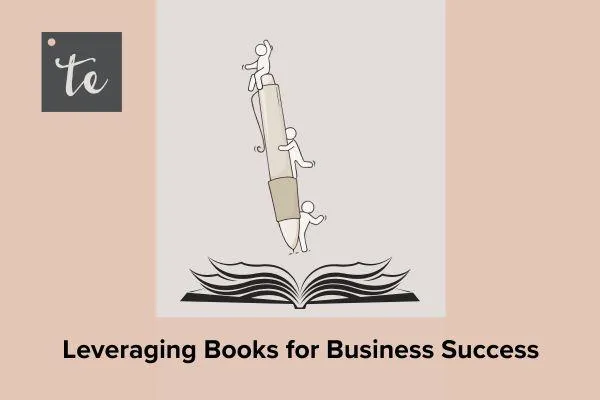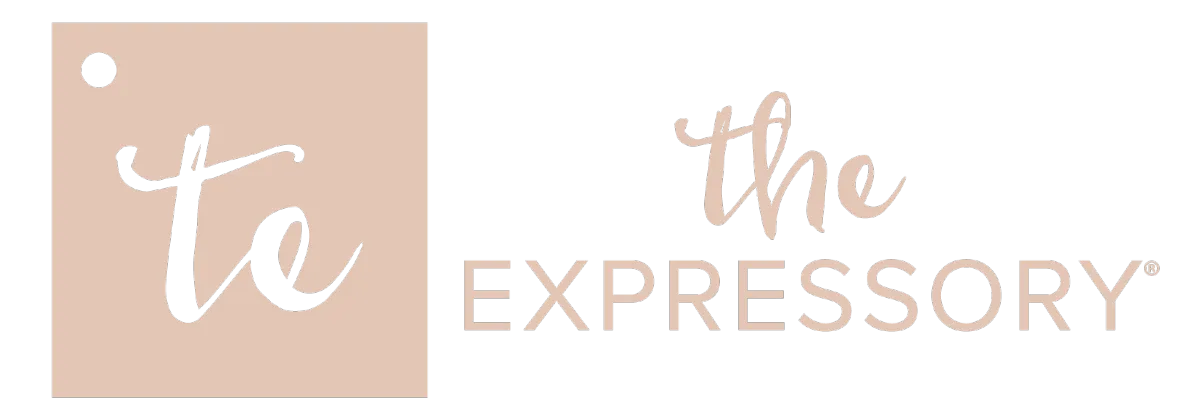
What Swimming Teaches Us About Team Relationships
In my latest video, I break down how swimming teaches us the importance of these relationship-building efforts and the specifics of what we as leaders need to nurture with our teams.
Holiday Gift Insights - What Everyone Else Is Doing
In an effort to simplify the decision-making process, we're sharing some of the trends we've seen with gifting over the years. We're even sharing our best seller and why that gift had such success.
What Makes A Successful Holiday Gift? The Travel Bag Edition
Last year we had the opportunity to work with one of our clients in the travel and tourism space to design an experience that delivered their highest engagement yet.

Leveraging Books for Business Success
Standing out and creating meaningful connections with potential clients is more important than ever with a consumer base bombarded with noise at every turn. That’s why I’m always looking for new ways to leverage physical tools to capture attention and start a solid foundation for relationship building.
When I met Stuart Bell, from 90 Minute Books, I knew right away that we shared a strong passion for helping our clients grow their business through the relationship first strategies that our own businesses thrive on. And when I say, passion, I mean 14 pages of transcript from one call passion!
Bell describes 90 Minute Books as a company that works with business owners to create "conversation starting books." He emphasizes that these books are designed to be distinct from traditional books, focusing on a single purpose: to address a particular audience, deliver value, and initiate and nurture meaningful conversations with prospects, clients, and referral partners, ultimately supporting business growth and relationship building.
Through the course of our conversation, I learned insights on how business owners can leverage books to effectively market their services.
The Three Types of Contacts to Market a Book To
I thought it would be best to start at the beginning and learn what guidance 90 Minute Books offers as their authors are getting ready to launch their books. Through our work with other authors, we’ve found that there are certain types of mailings that are common to market a book as it is first introduced. But I wanted to know more about the lifecycle of that process – What on-going opportunities does an author have to leverage a book for business growth?
What Bell told me is that at 90 Minute Books, they recommend categorizing potential contacts and then using targeted book marketing as a conversation starter and lead generation tool. And this can honestly work with books that aren’t your own as long as the subject makes sense.
Bell categorizes potential contacts into three distinct groups: invisible prospects, visible prospects, and referrals.
Invisible Prospects
Invisible prospects are individuals who are not yet aware of you or your business. According to Bell, the key to reaching these people is through advertising that offers a free copy of your book. Instead of a direct pitch for your services, an ad offering a free book helps to capture their interest and contact information. This approach converts invisible prospects into visible ones by initiating a conversation and providing value upfront. This sets you up for continuous engagement until they are ready to take action.
Visible Prospects
Visible prospects are those you are already aware of but haven’t yet engaged deeply. These could be potential clients or specific targets within a known group, such as your newsletter list. For visible prospects, Bell recommends sending them a physical copy of your book. This method helps to cut through the noise of other marketing efforts and creates a memorable touchpoint.
When following up, referencing the book can add a layer of familiarity and value to your outreach. Bell says, “It’s a very cost-effective way of physically delivering something because you know where they are, it interrupts the flow of all the other noise that’s out there. Now, when you follow up, it’s not just Stuart Bell, or Jamie Shibley, out of the blue, it’s – I’m the person that sent you the book”.
Referrals
Referrals are the lifeblood of many businesses. Bell suggests leveraging your book as a tool to facilitate referrals. By providing your top clients with copies of your book, you empower them to share valuable information with their network. This not only adds value to the recipients but also strengthens the relationship with your existing clients by positioning them as helpful resources. Encouraging clients to pass along your book makes it easier for them to refer your services in a meaningful way.
How to Utilize Books with Strategic Partners (Referral Partners)
Let’s dig into that third category a little further though. The potential referral partners or strategic partners are highly valuable to your company and worth understanding how to engage.
When you give a book to a strategic partner, you’re not just handing over a marketing piece; you’re giving them a resource that adds value to their conversations. The book should be given to them if it’s filled with useful insights, strategies, or solutions relevant to their audience. This is going to help the partner appear knowledgeable and helpful, enhancing their own reputation while promoting your services.
Identify Strategic Partners
Determine who your best referral sources are. These might be businesses in complementary industries or individuals with strong networks in your target market.
The book you share with them should address the needs and interests of their audience.
Facilitating The Easy Referral
Provide your strategic partners with several copies of your book, encouraging them to share it with their contacts. Instead of just mentioning your name or handing out business cards, partners can provide a book that offers immediate value to the recipient. This not only makes the referral process smoother but also increases the likelihood that the potential client will engage with your content and services.
In order to make it simple for partners to refer to your services you need to explain how the book can help their clients and enhance their own credibility.
Follow Up and Support
Regularly check in with your partners to see how they are using the books and offer additional support or materials as needed. This keeps the relationship strong and ensures your book is being utilized effectively.
Bell’s approach demonstrates that books are a powerful asset. By empowering your strategic referral partners with a valuable resource, you can create a ripple effect that significantly expands your reach and impact, while strengthening the relationship you have with that partner.
The Most Targeted Book
While we suggested there are three categories of relationships you should target with your book, you’ll notice there aren’t really any parameters on how large or small the lists within those categories need to be. But Bell did offer a story that illustrates just how powerful a targeted book mailing can be - even when the target audience is as small as one person.
One of his clients had been struggling to connect with a high-value potential client. Traditional methods of outreach weren’t working, and the client needed a creative solution to break through the barriers. Inspired by Bell’s approach of categorized outreach, the client decided to write an entire book specifically to capture the attention of this one elusive prospect.
Instead of a generic pitch or a traditional marketing piece, the book was crafted around a specific methodology that aligned with the interests and needs of the target client. The book did not focus on self-promotion, only on delivering genuine value through insightful content. The client ensured that the book’s presentation was professional, opting for a hardback version to emphasize its importance and credibility.
Sending The Targeted Book
Once the book was ready, the client sent it to the target prospect via FedEx, ensuring it stood out from regular mail. To make it even more personal, the client included a handwritten note on a sticky note attached to a specific chapter, drawing the prospect’s attention to the most relevant part of the book.
Following the delivery, the client sent a follow-up email, using the book’s title as the subject line to maintain continuity and intrigue. This strategic approach ensured that the email did not get lost in the clutter of the prospect’s inbox.
Results of a Targeted Book
The effort paid off. The prospect was intrigued by the tailored content and the professional presentation of the book. The handwritten note added a personal touch that showed the client’s genuine interest and effort. As a result, the prospect reached out to schedule a call.
This particular high-value client was worth tens of thousands of dollars, possibly even more. The investment in creating a targeted book for one person was worth the effort, proving the effectiveness of Bell’s approach.
Bell's insights provide a roadmap for using books as an effective on-going marketing tool. By targeting different types of prospects, being strategic with your outreach, and leveraging the power of referral partners, business owners can turn a simple book into an impactful asset.
If you need some additional guidance to plan your approach with these three different types of relationships you can always bring your questions/ideas to one of our upcoming Q&A sessions for discussion.
Address:
1500 S. Sylvania Ave #106
Sturtevant WI 53177
Phone:
414.243.8971

